When planning a trip to the beach, sun protection is one of the most important things to consider. Sunburns, premature aging, and skin cancer are all potential risks of overexposure to the sun’s harmful rays. In this guide, we’ll explore the importance of SPF and how to choose the right sun protection for your needs. Also included is a list of the Best Sun Protection for the Beach.
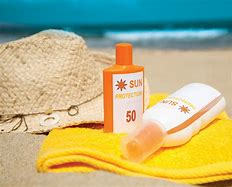
Things to know about sun protection.
Sun protection can be a little complicated. Below is some useful information on the best protection for a day in the sun.
Why is SPF important?
SPF stands for Sun Protection Factor, which is a measure of how well a sunscreen can protect the skin from harmful UV rays. The higher the SPF, the more protection it provides. UV rays can cause sunburns, skin damage, and even skin cancer. Therefore, it’s crucial to use sun protection with adequate SPF to protect your skin.
Understanding SPF levels
SPF levels range from 2 to 50+, with higher levels indicating greater protection. SPF 30 is considered the minimum level of protection recommended by dermatologists. It blocks about 97% of UVB rays, while SPF 50 blocks around 98%. However, it’s important to note that no sunscreen can provide 100% protection, and reapplication is necessary for optimal results.
Choosing the right sunscreen
When choosing a sunscreen, it’s essential to consider your skin type, activity level, and the environment. If you have sensitive skin, choose a mineral-based sunscreen with ingredients such as titanium dioxide or zinc oxide. For water activities, look for water-resistant sunscreens. And for hot, humid environments, choose a lightweight, oil-free sunscreen to prevent clogged pores.
Applying sunscreen correctly
To ensure proper sun protection, it’s crucial to apply sunscreen correctly. Apply a generous amount of sunscreen to all exposed skin, including the face, neck, and ears. Reapply every two hours or immediately after swimming or sweating. Don’t forget to apply sunscreen to areas such as the scalp, hands, and feet.
Other sun protection measures
In addition to using sunscreen, there are other measures you can take to protect your skin from the sun’s harmful rays. Wear protective clothing such as hats, long-sleeved shirts, and pants. Seek shade during peak sun hours (10 am to 4 pm). And avoid tanning beds, which can increase your risk of skin cancer.
The Best 3 Sun Protection Options for the Beach
There are so many options out there when it comes to sunscreen, which can make choosing the right one overwhelming. I have compiled a list of great sun protection products that will aid in your decision making.
1. Mineral-Based Sunscreen
If you have sensitive skin, you don’t want to be limited in your activities, including being outside in the sun. Below is a list of three great sunscreen choices for those with sensitive skin.
La Roche-Posay Anthelios Mineral Ultra-Light Fluid Broad Spectrum SPF 50
La Roche-Posay Anthelios Mineral Ultra-Light Fluid Broad Spectrum SPF 50 sunscreen is recommended by dermatologists and has a lightweight formula that sinks right into the skin, blending in seamlessly. It is fragrance-free. Additionally, this sunscreen has a high SPF and water-resistant properties.
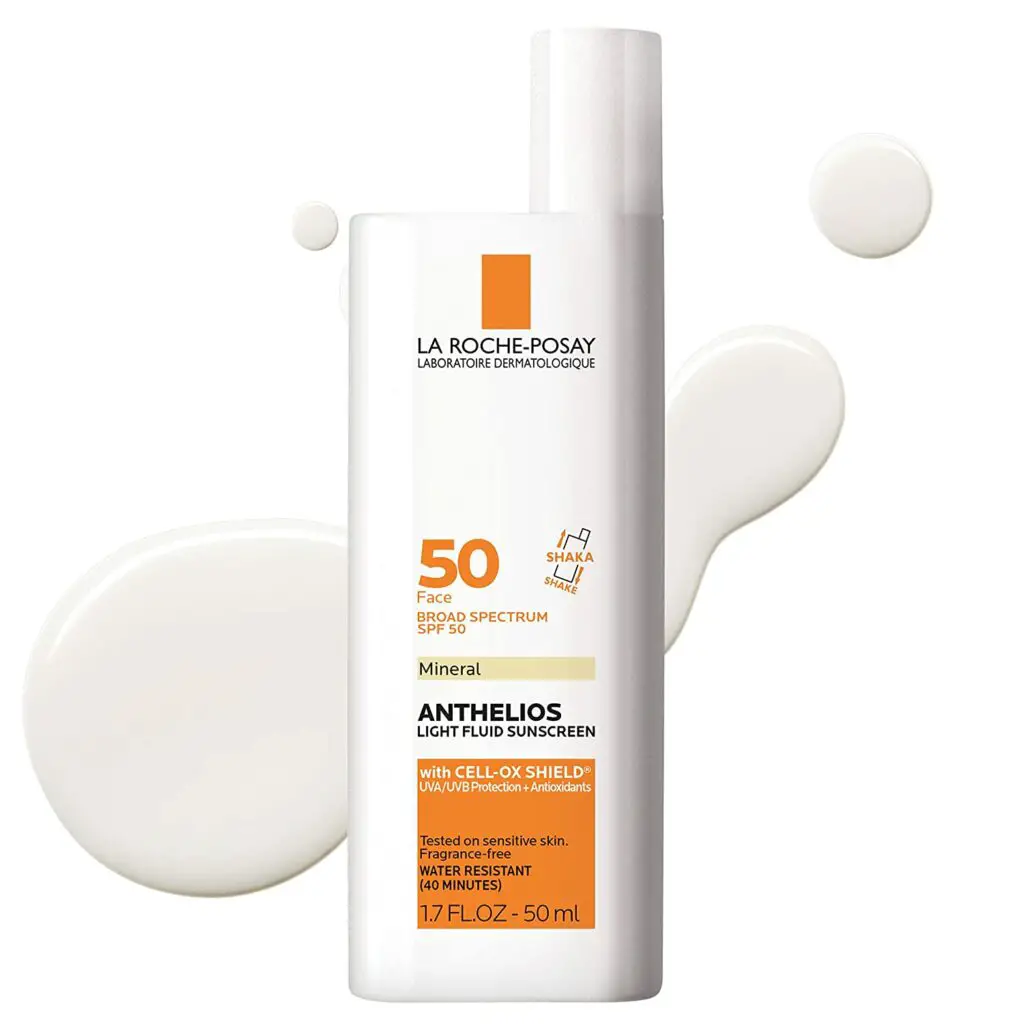
Coppertone Pure & Simple Sunscreen Lotion SPF 50
This sunscreen is high in SPF and budget friendly. Coppertone Pure & Simple Sunscreen Lotion SPF 50 is great for poolside days. The formula contains zinc oxide and skin-boosting botanicals, including tea leaf, sea kelp, and lotus extracts to keep your face and body feeling hydrated and happy under the sun’s harsh rays.
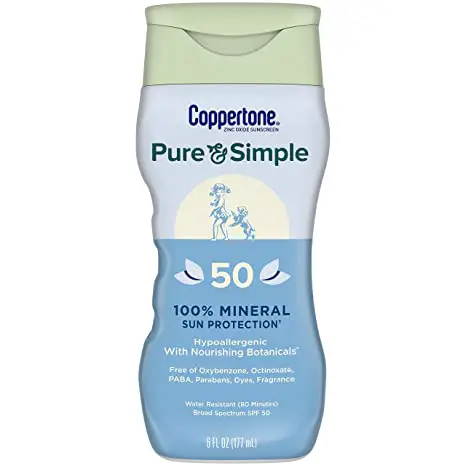
Blue Lizard Australian Sunscreen, Sensitive SPF 30+
Blue Lizard Australian Sunscreen Sensitive SPF 30+ is a broad spectrum UVA/UVB dermatologist recommended sun screen. It has a mineral based formula with no chemical active ingredients. There is also the added benefits of up to 40 minutes water resistance and don’t damage delicate coral reefs.
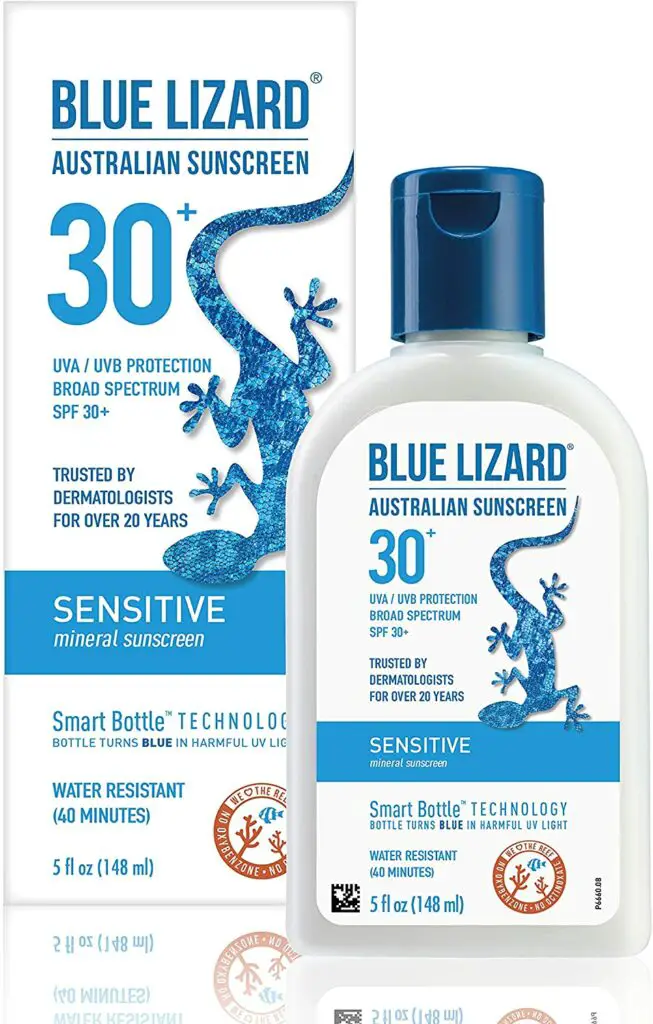
2. Water Resistant Sunscreen
What is a day at the beach, without spending time in the water. When you are in and out of water, you don’t want to constantly be reapplying your sunscreen. Below are three great options that will give you lots of sun and water time.
Hawaiian Tropic Sheer Touch Lotion Sunscreen SPF 30
This well known sun protection brand with its tropical scent is reef friendly, moisturizing with vitamins C and E, and gives you up to 80 mins of water resistance. Hawaiian Tropic Sheer Touch Lotion Sunscreen SPF 30 gives skin a glimmery sheen and the hydration making it perf for someone with normal to dry skin.
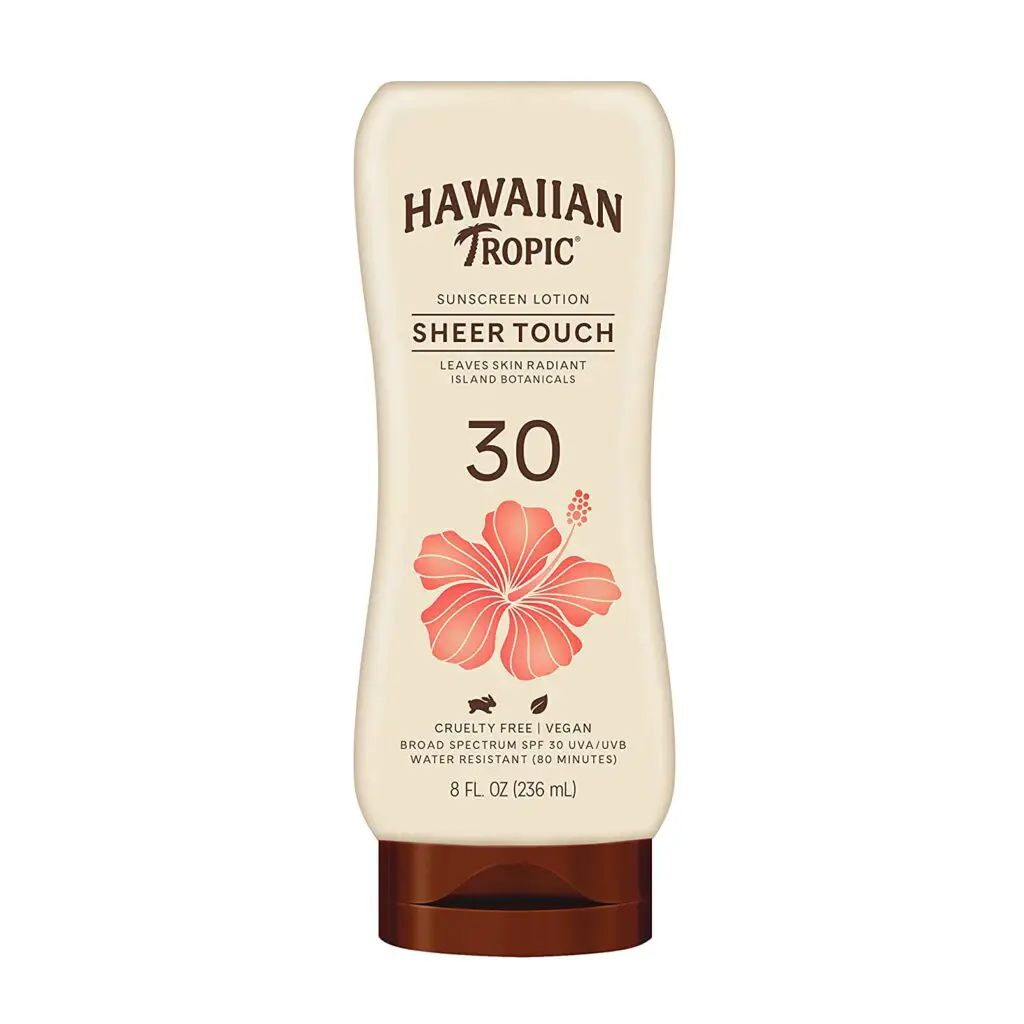
Neutrogena Ultra Sheer Dry Touch SPF 50 Mineral Sunscreen Stick
Sunscreen in the form of a stick, not what you think of when it comes to sunscreen. However, Neutrogena Ultra Sheer Dry Touch SPF 50 Mineral Sunscreen Stick is no slouch when it comes to sun protection. You get water-resistant protection for 80 minutes, and the formula is easily spreadable, non-oily, vegan, fragrance-free, and good choice for those with sensitive skin. An added benefit is that you can see where you applied, as there is a white cast until rubbed in.

Sun Bum Original SPF 50 Sunscreen Lotion
When you find a sunscreen that is vegan, gluten-free, hypoallergenic, and good for all skin types, you need to look twice. Sun Bum Original SPF 50 Sunscreen Lotion offers 80 mins of water resistance protection, smells like summer or bananas depending on who you ask lol.
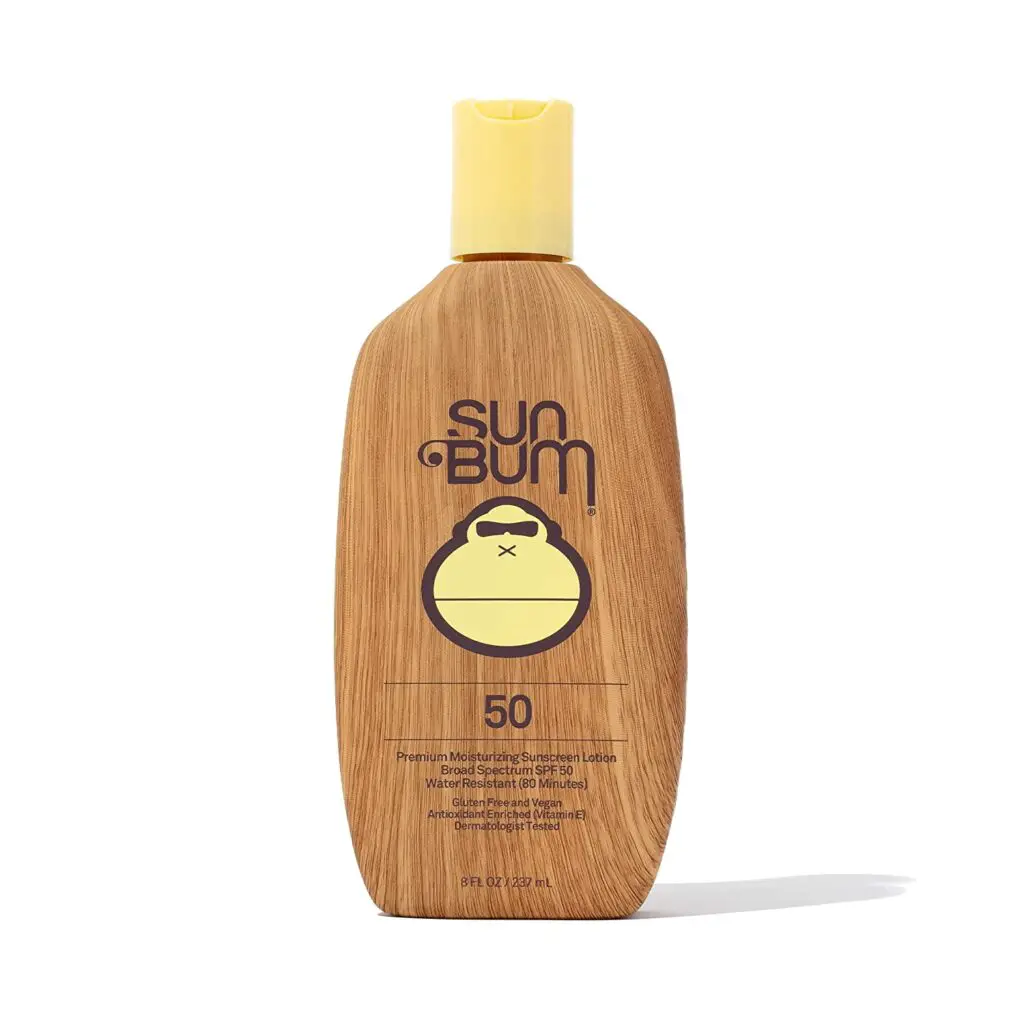
3. Sweat Resistant Sunscreen
Your day in the sun might not involved water and may just involve physical activity. You still need to be protected. Here are some great choices of sunscreen that are sweat resistant.
Aveeno Protect + Hydrate Sunscreen Lotion SPF 30
If you are looking for a sunscreen that is safe for your face and body and has sweat resistance features, of up to 80 minutes, check out Aveeno Protect + Hydrate Sunscreen Lotion SPF30 With the Active Naturals oat formula, your skin is nourished, moisturized, and hydrated.

Neutrogena Beach Defense Sunscreen Lotion SPF 70
This oil-free body sunscreen provides broad spectrum protection against skin-aging UVA rays and skin-burning UVB rays. Neutrogena Beach Defense Sunscreen Lotion SPF 70 has a fast absorbing, lightweight, PABA and oxybenzone free formula. This number one dermatologist recommended brand with up to 80 minutes of sweat resistant protection make this a great choice for you and for family’s outdoor adventures.
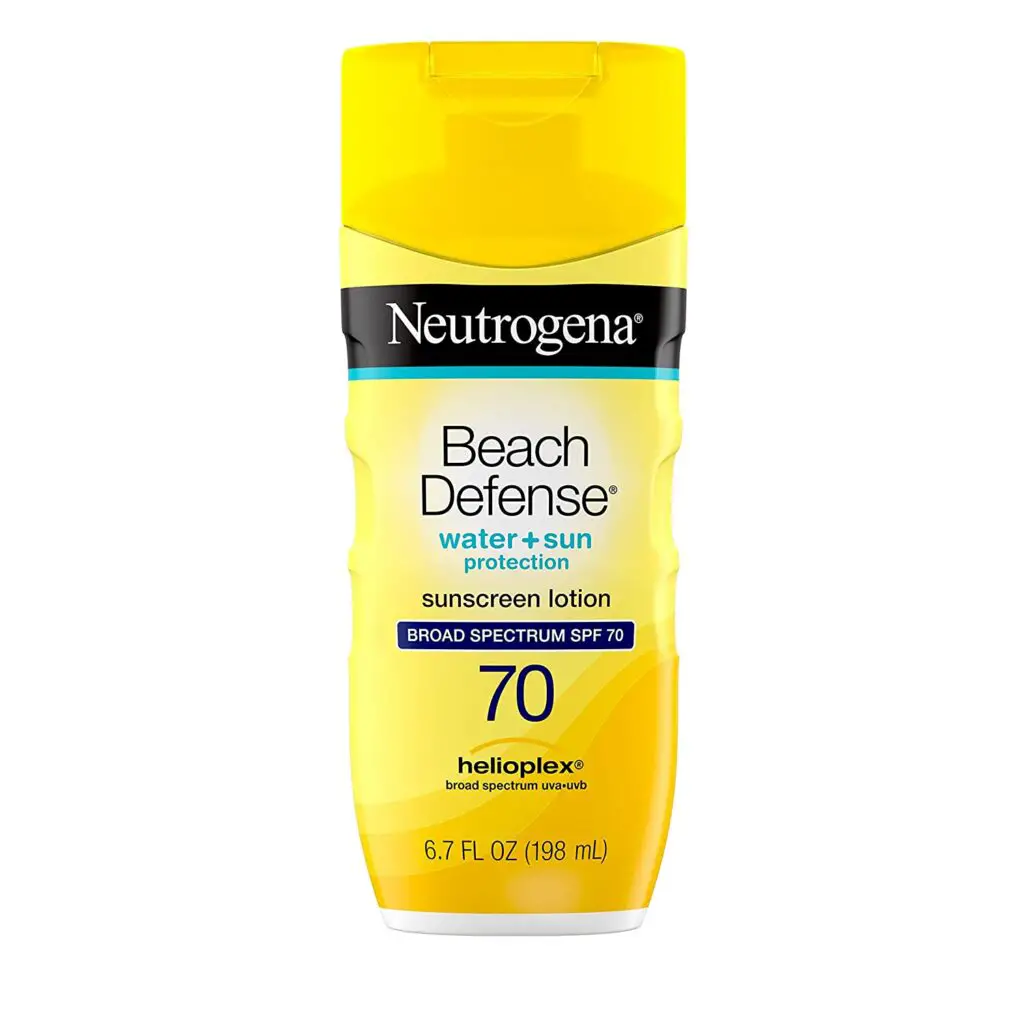
Coppertone SPORT Sunscreen SPF 50 Lotion
Coppertone SPORT Sunscreen SPF 50 Lotion is a name we all recognize and trust. This sunscreen has a sweat resistant formula up to 80 minutes and is non-greasy, lightweight, and contains vitamin E to help improve your skin’s natural defenses with the help of antioxidants.

FAQs: Sun Protection for the Beach
As you’ve learned, sun protection is essential for any beach trip. Here are some common questions about SPF that you may have:
1. What does SPF stand for and what does it mean?
SPF stands for “Sun Protection Factor.” It’s a measure of how well a sunscreen can protect your skin from the sun’s harmful UVB rays. The number associated with the SPF indicates the amount of time it takes for your skin to burn compared to unprotected skin. For example, if you use a sunscreen with an SPF of 30, it will take 30 times longer for your skin to burn than if you were not wearing any sunscreen.
2. What’s the difference between UVA and UVB rays?
Both UVA and UVB rays are types of ultraviolet radiation emitted by the sun. UVA rays are longer and can penetrate deep into the skin, causing premature aging and skin damage. UVB rays are shorter and are the primary cause of sunburn. Both types of rays can increase your risk of skin cancer.
3. How often should I reapply sunscreen while at the beach?
It’s recommended that you reapply sunscreen every two hours while at the beach, or immediately after swimming or sweating. Even if your sunscreen claims to be water-resistant, it can still wear off over time. It’s also important to note that you should apply enough sunscreen to cover your entire body, using about an ounce (or a shot glass full) for adults. Don’t forget to apply sunscreen to often-overlooked areas like your ears, neck, and feet.
Conclusion
Sun protection is critical when spending time at the beach. Understanding the importance of SPF, choosing the right sunscreen, and applying it correctly can help protect your skin from the sun’s harmful rays. By taking these measures and incorporating other sun protection habits, you can enjoy the beach while keeping your skin healthy and safe.
For more information on sun protection and skin cancer prevention, visit the Skin Cancer Foundation website: https://www.skincancer.org/
If you’re planning a beach vacation, check out our guide on what to bring to the beach: What To Bring To The Beach (2023 Ultimate Packing List).
